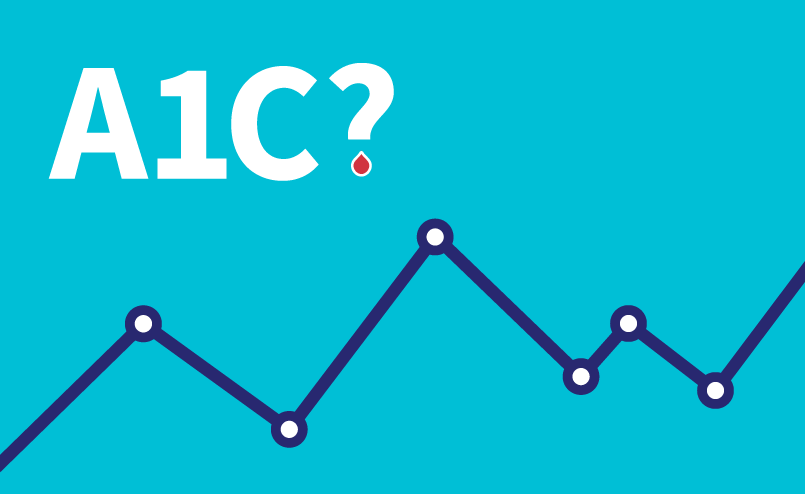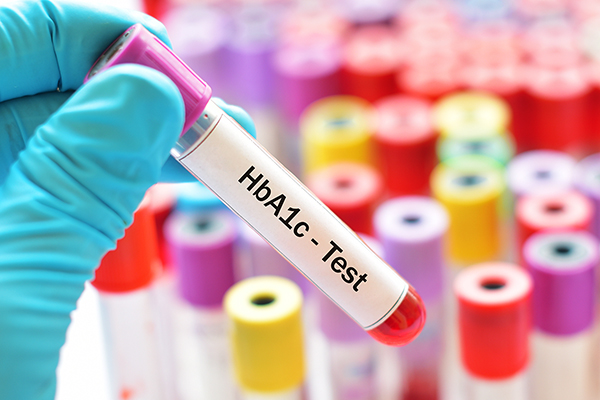When it comes to managing diabetes, A1C is a big deal. Hemoglobin A1C basically shows us how high our blood sugars are over a long period of time (around 3 months), and acts as a great measure to see how we’re doing. A1C has been shown in numerous studies to be strongly linked to all sorts of ills and complications. The higher the A1C, the higher the risk. With that in mind, we want to keep our A1C at a healthy level.
Unfortunately, for type 1 diabetics, there is controversy on what should be considered a good A1C. The ADA recommends a goal of 7%, while others recommend as high as 8% based on the context. I find this dubious and reckless, given that non-diabetic A1C is officially below 5.7%. If 7% is way above a normal, non-diabetic A1C, how could it be healthy? And if not that, what should your A1C be? What exactly does it mean to have a “healthy” A1C anyway?
In my eyes, being healthy means lowering your risk of complications as much as possible. An A1C that raises your risk isn’t healthy, much like how smoking 1 pack of cigarettes a day instead of 2 packs, while relatively better, still isn’t healthy. Thus, an A1C that lowers your risk for disease as much as possible is the end-goal, and nothing less can make the cut. We know high A1C is directly tied to higher risk for complications. But how high does it have to be to start raising risk, and by how much? Let’s go through a few studies and see.
Heart Disease
Heart attacks are the undisputed champion when it comes to cause of death, so let’s start there. For this we have several studies showing that risk increases once going above an A1C of 5%. In a study done on a group who would be considered “non-diabetic”, CHD risk rose after 5.5% and was almost 3x higher for those with an A1C of just 6.5%. Chart shown below.
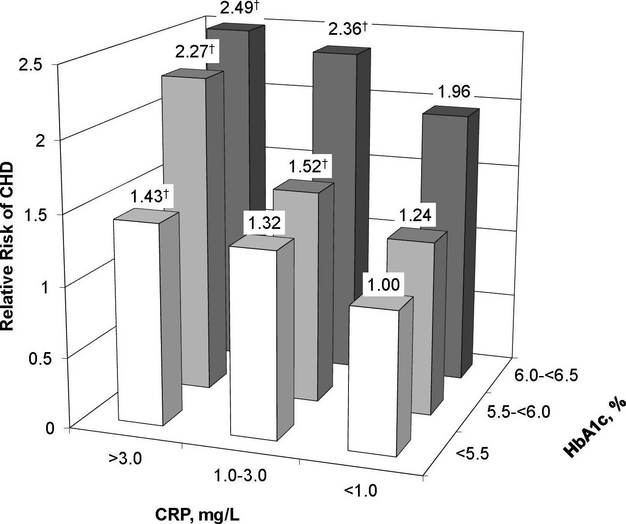
In a study that observed heart disease events of almost 10,000 men and women, the risk from an A1C in what the ADA considered “normal” was even more severe. Men with CVD events rose from 3.8 per 100 men at an A1C of 5%, to 28.4 per 100 men at just 7%. That’s a 7.5x higher risk! And in women, it went from 1.7 per 100 at 5% to 16.7 at 7%. That’s almost 10x more people! And the risk starts going up at just 5%.
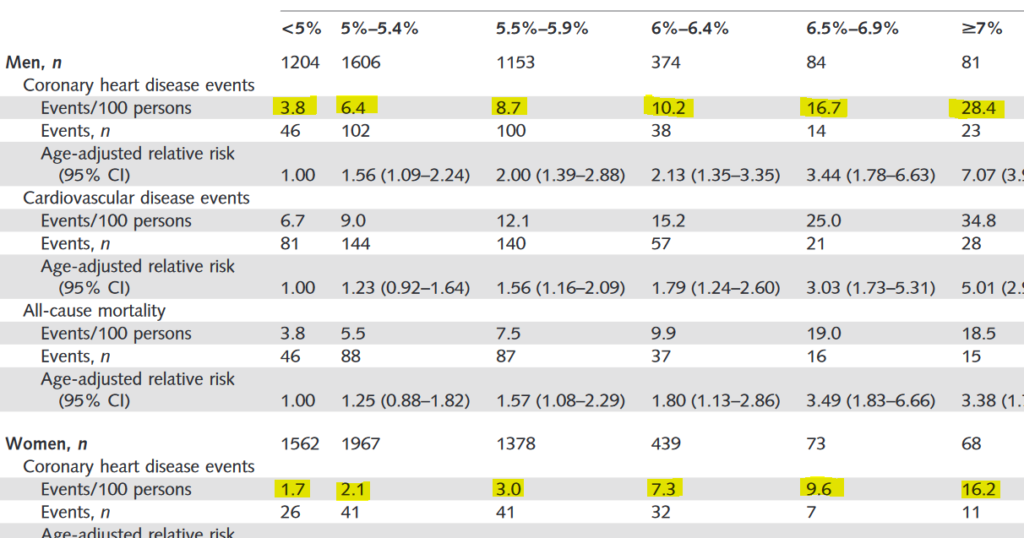
And in another study, focusing on the vascular health of type 2 diabetics, it was shown that the number of micro/macrovascular complications increased after just 5.5%. Complications went from under 40 people per 1000 at 5.5%, to over 120 per 1000 at 11%. Again, far higher risk, even at what the ADA would deem as a “healthy” A1C.
There are numerous other studies showing this consistent pattern with heart disease. Instead of drowning you in research for just one complication, I will show one more graph from other research and then move on to the next big killer.
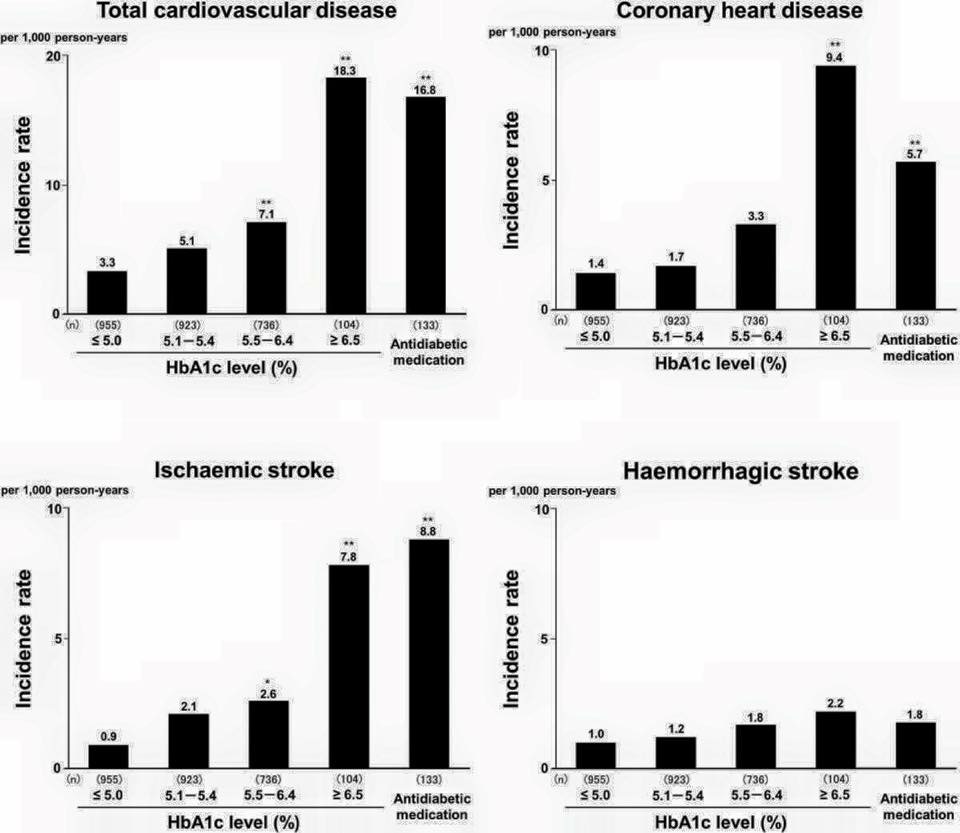
Cancer
Cancer is another big bad when it comes to mortality. And, as it turns out, many types of cancer love sugar and thus pose a far greater risk at high levels of A1C. In one study, it was shown that cancer risk started increasing rapidly (and was already increasing slightly) by the time A1C was at 6%.

And for another study, when you zoom in on how much cancer risk rose even when A1C was under 6%, you can see a huge jump after 5.5%
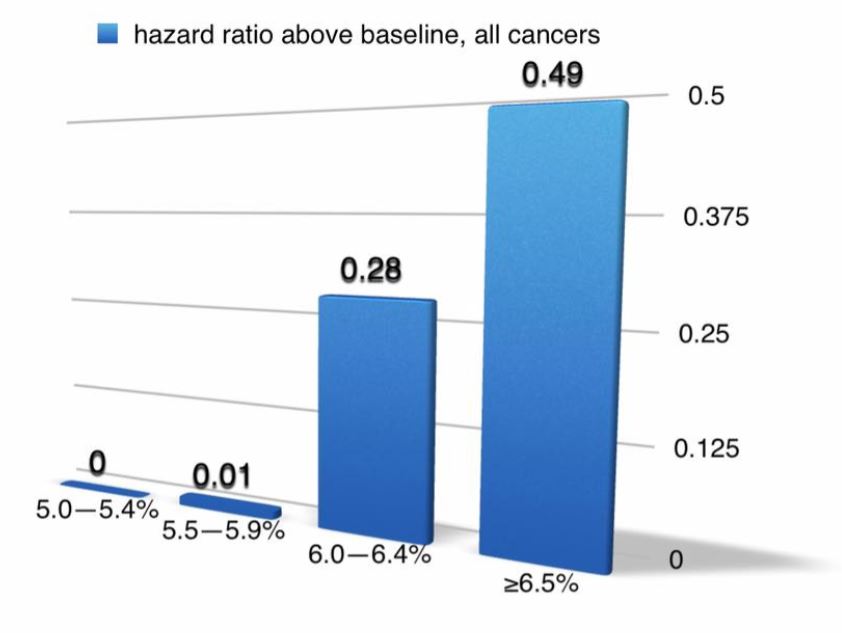
As you can see, cancer risk starts going up well-before the official guideline of 7%. We could go on all day about the vast amounts of other studies looking at other complications, such as retinopathy, nephropathy, kidney failure, and even brain damage. Risk for all of these issues consistently starts rising after 5-5.5%. I assume you can see the pattern by now, so let’s wrap this up by looking at mortality and complication rates.
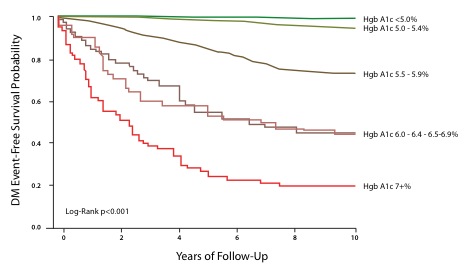
Could this be any more clear? Diabetics with an A1c of less than 5.5% were far more likely than anybody above that from having complications in 10 years of follow-up. Only 80% had no new complications between 5.5 and 5.9. And, at 7% or greater, only 20% of diabetics had no events in 10 years!
What This Means
How can doctors recommend an A1C that is clearly, time and time again, linked to an increased risk of so many complications? Perhaps it’s because they don’t think most diabetics can do better. And, unfortunately, statistics prove them right. The average A1C for type 1 diabetics is now above 7.5% for all ages and 9.3% for teens. But, is that because we are incapable, or because we are never told how to manage diabetes properly?

Clearly, an A1C of 7% isn’t actually that healthy at all. 7% is an A1C that will lead to complications, just slightly later. And when they happen, the doctor will expect it, shrug, and tell you that complications are inevitable. But they aren’t inevitable. We are capable of reaching an A1C that limits risk entirely. And that A1C is ideally below 5%, and certainly below 5.5%. Anything higher, while worth celebrating in terms of progress, is not a goal we should strive to stay at.
We are capable of reaching an A1C that limits risk entirely. And that A1C is ideally below 5%, and certainly below 5.5%.
It may seem impossible. In fact, trying to get an A1C of 5% by eating high-carb junk and taking tons of insulin is bound to fail. But, given the proper low-carb techniques, it is entirely within your reach. There are many people who have, and there’s no reason you can’t too, but it has to be done right. That is why it’s so important to learn how to truly tame type 1.
One Important Note
As a side-note, A1C shows merely an average of your blood sugar over a few months. It does not factor in how high your highs are, or how low your lows are. One can be on a constant blood sugar rollercoaster, going from 300 down to 60, and still miraculously have an A1C of 5.5%. Getting your blood sugars into a tighter range is also critical for reducing risk. When it comes to risk, standard deviation is important to consider, along with A1C.

Sources:
https://dash.harvard.edu/bitstream/handle/1/11363030/3647270.pdf
https://www.ncbi.nlm.nih.gov/pubmed/15381514
https://www.bmj.com/content/321/7258/405
https://link.springer.com/article/10.1186/1475-2840-12-164
https://www.ncbi.nlm.nih.gov/pubmed/20185812
http://www.townsendletter.com/Jan2014/predbio0114.html
https://www.ncbi.nlm.nih.gov/pubmed/30657336






